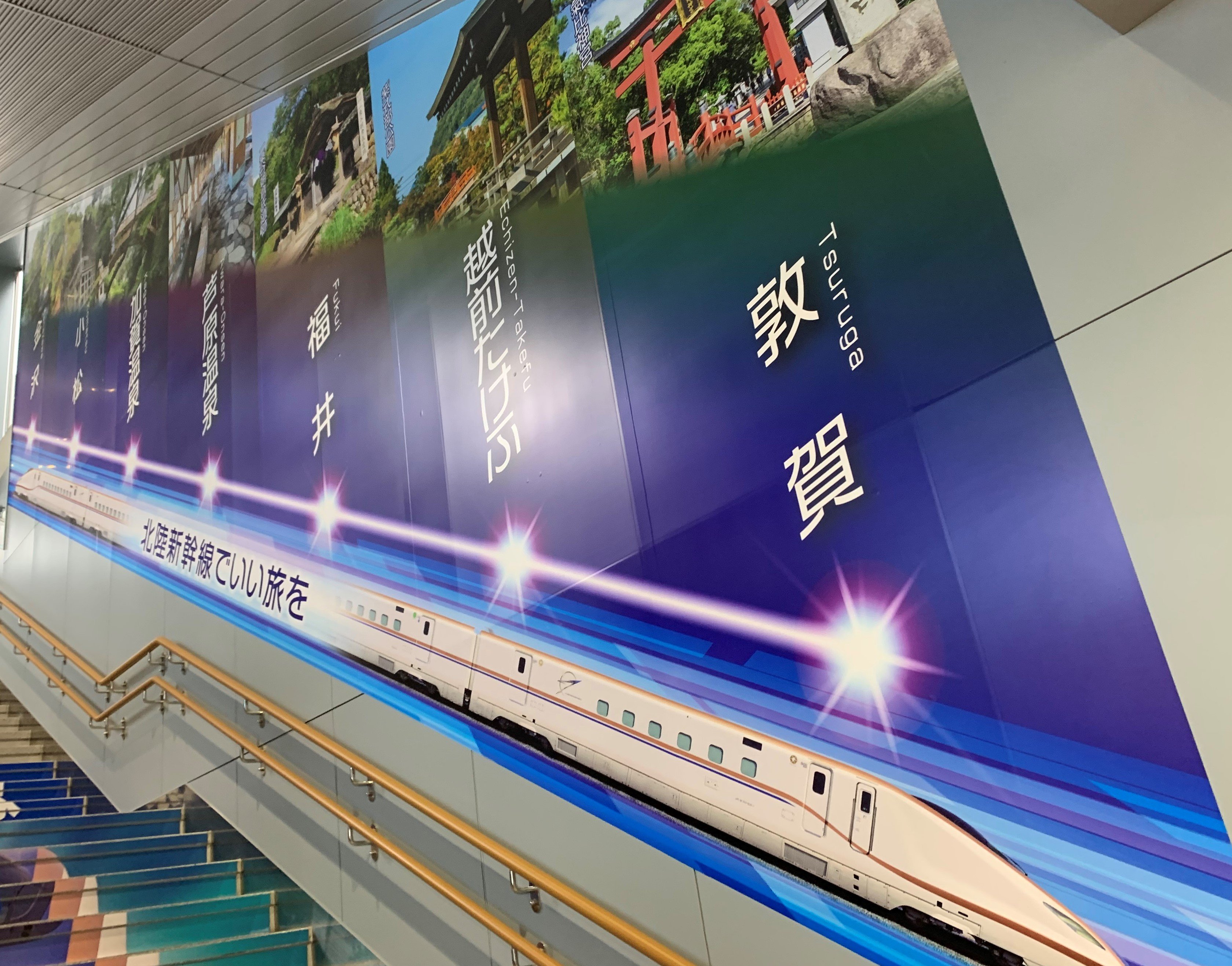The Hokuriku Shinkansen, one of the five new shinkansen lines designated in the development program based on the Nationwide Shinkansen Railway Development Law is planned between Tokyo and Osaka, via Hokuriku region. The first section of 117 km between Takasaki and Nagano opened on October 1, 1997 prior to the Nagano Olympics in February 1998, and Nagano-Kanazawa section of 240 km started operation on March 14, 2015.
The opening of Kanazawa-Tsuruga section of 125 km planned on March 16, 2024 will be the second extension, following the one in 2015. Thanks to this extension, the travel time from Tokyo to Fukui will be 2 hours and 51 minutes with the fastest train, cutting down the travel time by 36 minutes from the current 3 hours and 27 minutes. This new line is expected to bring more people to the Hokuriku area, spurring economic growth in the tourism industry and other areas along the line.
With the extension, a total of six stations will open, including two in Ishikawa Prefecture (Komatsu and Kaga-Onsen) and four in Fukui Prefecture (Awara-Onsen, Fukui, Echizen- Takefu, and Tsuruga). Each station on the extension line was designed based on the concepts presented by local governments so that it can integrate with the local community, reflecting the traditions, culture, and history of the region. For example, the interior design of the stations are built with prefectural materials, such as prefectural timber, Kutani ware, Shakudani stone, and Echizen Japanese paper to express regional characteristics. Such designs will allow visitors to see colors of the region, and passengers are sure to enjoy sightseeing just even by walking through these stations.
The charm of the Hokuriku Shinkansen’s design is not limited to its stations. The concept of the Hokuriku Shinkansen trains (E7/W7 series) is "the Future of Wa (Harmony)." As a Shinkansen that bridges the traditional Hokuriku region and Tokyo metropolitan area, the car design sheds light on the values and aesthetics of "wa," handed down throughout Japan's history, and embodies the wish of carrying “wa” into the future. Colors on the car have meanings. Sky blue on its upper body and band represents the blue vast sky stretching over the Hokuriku Shinkansen line. Ivory white of the train body represents Japanese-style elegance and composure, and copper color of the band represents the color of Japan's traditional crafts, such as copperware and damascening.
What’ more, fully active suspension is equipped for the premium car “GranClass” to reduce vibration while the car is in motion. In addition, there are many features promising a comfortable travel, such as Braille seat numbers on all seats, and washlet with a heated seat for all western-style restrooms.
The area along the extended line is rich in local resources such as cuisine culture, traditional handicrafts, and full of fascinating tourism spots such as Nata Temple, Kaga Onsenkyo, Awara Onsen, and Kehi no Matsubara. The extension of the Hokuriku Shinkansen line will attract many people to the Hokuriku region, bringing new winds to the local tourism industry and providing chances for Hokuriku region to introduce its charms to the rest of Japan and the world.
Ref)
・West Japan Railway Company website
https://www.westjr.co.jp/
・Japan Railway Construction, Transport and Technology Agency website
https://www.jrtt.go.jp/
Photo by JR West
